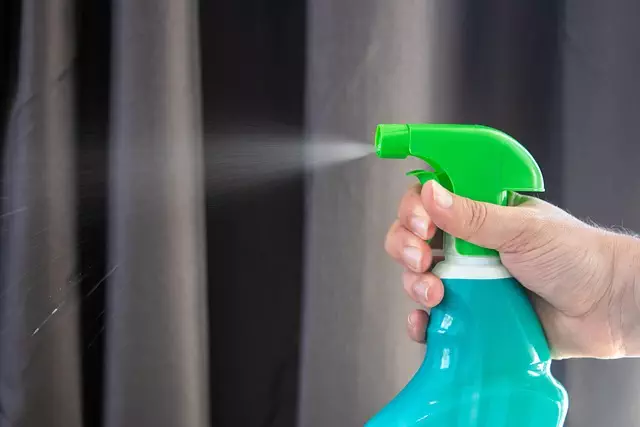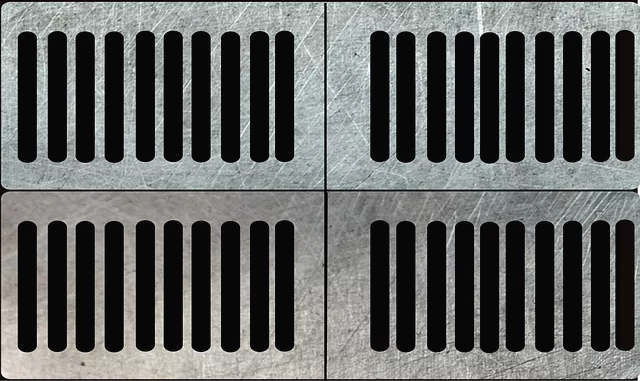Kitchen drain clogs, caused by grease buildup, food scraps, and hair, can range from partial to complete blockages. Effective drain cleaning involves understanding these causes, using regular maintenance, hot water flushes, and natural solutions like baking soda and vinegar. The right tools, including a plunger, tongs, and a drain snake, are essential for unclogging. Chemical cleaners should be used with caution due to their corrosive nature, while natural methods offer safer alternatives. Advanced techniques, like enzyme-based cleaners and power wash systems, ensure thorough drain cleansing. Preventive steps include installing drain covers, regular hot water pours, and periodic natural cleaner usage. Avoid using chemical cleaners without ventilation or relying solely on hot water for blockages.
Unclogging your kitchen drain isn’t just about removing a temporary blockage; it’s essential maintenance for any homeowner. From understanding common causes like grease buildup and food debris to mastering advanced cleaning techniques, this guide covers everything you need to know for effective kitchen drain cleaning. Discover the best tools, natural vs. chemical solutions, and preventive tips to keep your drains clear and your kitchen flowing smoothly.
Understanding Kitchen Drain Clogs: Common Causes and Types

Kitchen drain clogs are a common household issue that can disrupt daily routines. Understanding the causes and types of these clogs is the first step in effective kitchen drain cleaning. The most prevalent cause is the accumulation of grease, food scraps, and hair, which solidify over time to form a sticky mass that traps water and other substances, leading to slow drainage or complete blockages.
There are several types of drain clogs, each requiring specific cleaning methods. These include partial blockages caused by items like coffee grounds or small toys, and complete obstructions resulting from hard-to-remove materials such as grease and fat, or even tree roots that have infiltrated the pipes. Regular kitchen drain cleaning practices can help prevent these issues, ensuring smooth drainage and maintaining a hygienic cooking environment.
The Importance of Regular Maintenance for Kitchen Drains

Regular maintenance is key when it comes to keeping your kitchen drains in top condition. Over time, drains can accumulate a buildup of grease, food debris, and other household waste, leading to clogs and slow drainage. This not only causes inconvenience but can also lead to more serious plumbing issues if left unattended.
A consistent cleaning routine is an effective way to prevent these problems. Simple steps like using drain catchers or covers to trap solid particles, regularly flushing hot water down the drains, and employing natural cleaning solutions like baking soda and vinegar can go a long way in maintaining smooth drainage. Regular upkeep ensures that your kitchen’s heart—the drain—remains robust and efficient, facilitating seamless food preparation and clean-up processes.
Tools and Equipment Essential for Effective Drain Cleaning

When it comes to effective drain cleaning, the right tools and equipment make all the difference. Start with a basic set that includes a sturdy plunger designed for drains—a must-have for unclogging sinks and showers. Plungers create suction, which can dislodge hair, grease, and other debris buildup. A pair of heavy-duty metal tongs is another valuable asset; they allow you to safely grab and remove stubborn clogs without damaging pipes.
For more severe blockages, a drain snake or auger is essential. These flexible, spiral tools are inserted into the drain and turned to break up and dislodge obstructions. Chemical drain cleaners can also be helpful, though they should be used cautiously due to their corrosive nature. Always wear protective gear, such as gloves and safety goggles, when handling these products.
Step-by-Step Guide to Unclogging a Kitchen Sink

Unclogging a kitchen sink is a common household task, and with the right approach, it can be done efficiently. Here’s a step-by-step guide to help you tackle this chore:
1. Gather Your Tools: Before beginning, ensure you have a few essential tools at hand. A plunger, a set of pliers, and a drain snake (or a length of rigid wire) are the primary tools you’ll need. These tools will help dislodge any debris blocking the drain.
2. Cut or Remove the U-Bend: The U-shaped pipe under your sink is often where clogs accumulate. Use the pliers to carefully twist and pull this section until it comes loose, exposing the pipes inside. This step may vary depending on your sink setup but is a crucial first move in clearing the clog.
3. Plunge Away the Clog: Place the plunger over the exposed drain opening and ensure a tight seal. Pump up and down vigorously to create suction and break apart any debris blocking the drain. This method often dislodges simple clogs, and you may hear a sudden rush of water escaping as the clog clears.
4. Use a Drain Snake: If the plunger doesn’t work, insert the drain snake into the drain. Twist and push it down to break up the clog. You can use the handle on the snake to pull out any removed debris. Repeat this process until you clear the blockage or reach the end of the pipe, indicating no further obstruction.
5. Flush with Hot Water: Once unclogged, flush the drain with hot water to ensure all debris is washed away and to prevent future clogs by maintaining a clear pipe system. Regularly cleaning your kitchen sink drain helps keep it free-flowing.
Chemical vs Natural Drain Cleaning Methods: Pros and Cons

When it comes to cleaning kitchen drains, there are two primary approaches: chemical and natural methods. Chemical drain cleaners, while effective in clearing clogs quickly, have drawbacks. They can be harmful to pipes over time, potentially damaging them due to aggressive chemicals. Additionally, these products often release toxic fumes, posing health risks if not used properly in well-ventilated areas.
Natural drain cleaning methods, on the other hand, offer a safer and more environmentally friendly alternative. Using ingredients like baking soda and vinegar, for instance, creates a powerful cleaning reaction without harmful chemicals. These natural solutions are cost-effective, easy to implement, and minimize environmental impact. However, they may require more time and effort compared to chemical cleaners, as results might take a bit longer to appear.
Advanced Techniques for Deep Cleaning Kitchen Drains

Deep cleaning kitchen drains involves more than just a quick scrub with a plunger or wire brush. For truly thorough drain cleaning, incorporate advanced techniques to eliminate built-up gunk and prevent future clogs. One effective method is using specialized chemical cleaners designed to break down grease, food particles, and other obstructions. These enzymes-based solutions can penetrate tough residues, leaving drains sparkling clean.
Another innovative approach is employing a power wash system. High-pressure water jets can blast away stubborn debris and hard water stains, returning your kitchen drains to their optimal flow. Regular maintenance with a mix of chemical cleaners and power washing will keep your drains clear, ensuring efficient waste removal and minimizing the risk of costly clogs.
Preventive Measures: Tips to Keep Your Kitchen Drains Clog-Free

Keeping your kitchen drains clog-free involves a combination of regular cleaning and preventive measures. Start by installing a drain cover to catch hair, grease, and other debris before they enter the pipes. Regularly pour hot water down the drain—boiling for even better results—to help dissolve any accumulated fat or food particles. Additionally, use a mix of baking soda and vinegar every few weeks as a natural cleaner; this combination is effective in breaking down clogs without harsh chemicals.
Avoid flushing down grease, coffee grounds, or large food scraps to prevent build-up. Opt for using a trash can near the stove instead. Also, consider scheduling professional drain cleaning services at least once a year to inspect and clear any potential blockages before they cause major issues. These preventive steps will significantly reduce the need for frequent drain cleaning, keeping your kitchen drains flowing smoothly.
Common Mistakes to Avoid During the Drain Cleaning Process

When tackling kitchen drain cleaning, it’s important to be aware of common mistakes that can make the process less effective or even cause further clogs. One of the biggest blunders is using chemical cleaners without proper ventilation; this not only poses health risks but may also damage your pipes over time. Always open a window and wear protective gear when handling these products.
Another mistake to avoid is using hot water alone to clear blockages. While it can help temporarily, it often pushes debris further down the drain instead of removing it. Opt for a combination of hot water and a plunger for initial uncloggings or consider using natural cleaning solutions like baking soda and vinegar, which are safer and more environmentally friendly.



